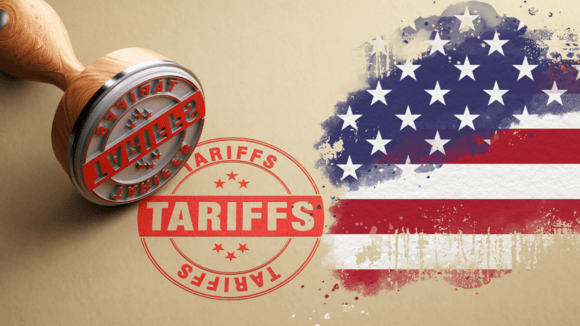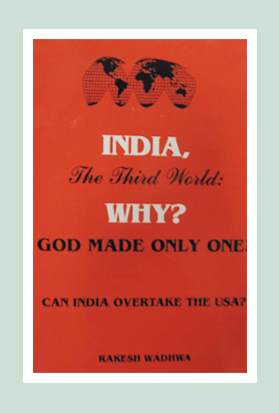Tariffs vs Taxes: Choosing Between the Devil & the Deep Blue Sea
 The Trump administration’s 25% tariff on steel and aluminum imports from anywhere in the world sent shockwaves. The global stock market bloodbath stands as a testament to how unnerving this move was. But it was just the beginning. The 20% tariff on Chinese imports wasn’t surprising, given the fierce power struggle between the governments of the two countries. What shocked people was that US President Donald Trump didn’t spare allies either. Canada got slapped with 25% tariffs, while the EU was threatened with 200% tariffs on alcohol imports. The latest is the US President’s threat to levy tariffs on vehicles and auto parts as well as on any country buying oil from Russia.
The Trump administration’s 25% tariff on steel and aluminum imports from anywhere in the world sent shockwaves. The global stock market bloodbath stands as a testament to how unnerving this move was. But it was just the beginning. The 20% tariff on Chinese imports wasn’t surprising, given the fierce power struggle between the governments of the two countries. What shocked people was that US President Donald Trump didn’t spare allies either. Canada got slapped with 25% tariffs, while the EU was threatened with 200% tariffs on alcohol imports. The latest is the US President’s threat to levy tariffs on vehicles and auto parts as well as on any country buying oil from Russia.
Here’s a look at what tariffs are and how they’re being used as a very powerful weapon in America’s arsenal.
Tariffs and Taxes are Two Sides of the Same Coin
What’s the difference between taxes and tariffs? Nothing. Tariffs are a form of tax. The aim of both taxes and tariffs is to generate revenue for the government. Fundamentally, they are the same thing – a charge imposed by the government without any associated asset generation.
The subtle difference is that taxes are a direct hit on your income, while tariffs are disguised to influence your buying behavior by making certain goods more expensive.
The government has been able to sugarcoat these pills. It has made us believe that taxes are our duty to the nation and tariffs protect domestic businesses by increasing the price of imported goods.
Unfortunately, the reality is quite different.
Tariffs Have a Deeper Impact Than Taxes
Taxes reduce your disposable income or purchasing power. High income tax discourages people from working hard, resulting in lower productivity in the economy. High corporate taxes disincentivizes businesses. Elevated tax rates will also lead to more tax evasion.
Tariffs, on the other hand, cause a shift in production and consumption. Tariffs may be levied on items that are used as raw materials for production. The domestic businesses that import these items bear the burden of the tariff. These businesses either absorb the additional cost as a hit to their bottom-line or pass them onto the consumer in the form of higher prices.
Tariffs can cause a shift in the basket of goods available in the economy. Let’s say a country was producing cars. Huge tariffs on auto parts make vehicle production more expensive. The higher cost of cars may result in a decline in demand, as some people may choose to travel by public transport instead. With this change in buying behavior, some automakers may need to switch to manufacturing something else.
Most often, the consumer is unaware that the increased price is a result of tariffs rather than due to higher quality or other reasons. Since tariffs are invisibly built into the pricing, it violates the principle of transparency. This, in turn, makes it difficult to pinpoint the real consequences of tariffs. Tariffs also violate the principle of neutrality since they put a disproportionate burden on businesses and consumers.
Tariffs can also limit the availability of products, which forces consumers to settle for lower quality or high-priced domestic variants. So, the eventual impact of tariffs is an increase in the cost of living rather than protecting domestic industries.
Making a Deal with the Devil
So, why has Trump become this trigger happy with tariffs? The US President is using this as a bargaining chip to achieve his goals. Trump announced tariffs on Mexico to stop illegal immigration, while using it to get countries like India and Japan to lower their tariffs on US goods. America because the world’s largest importer gives the President tremendous leverage in getting other countries to fall in line with its goals.
If Trump’s threats cause India to lower its 200% tariffs on alcohol and Japan to cut its 700% tariffs on rice, it would have a positive impact after the dust settles.
There could be another reason for America leaning more towards tariffs now. The US President doled out a sprawling suite of promises during his election campaign. Among these were promises to lower tax rates for individuals and shower corporations with new incentives. But here’s the thing. Can the government coffers afford this? The numbers tell us a bleak story. The US government spends about $6.75 trillion per year, while collecting less than $5 trillion in revenue. The government makes up this difference of around $1.75 trillion by printing money.
Here’s where the government started feeling the heat. Printing more money means direct and almost immediate inflationary pressure. Neither can the US economy afford this, nor is this sustainable with Trump’s statement that he would “demand that interest rates drop immediately.”
To deliver on his promise of tax cuts, Trump needs an alternate way to increase revenue. Printing money is not an option if he wants the Federal Reserve to cut interest rates. Here’s where tariffs come in, as they are also a source of revenue for the government.
Tariffs Won’t Make America “Rich Again”
Trump claims, “We’re going to raise hundreds of billions in tariffs; we’re going to become so rich we’re not going to know where to spend that money.” Higher tariffs may make governments richer, but not the economy, as the payment comes from US businesses.
What They Got Right
DOGE – Department of Government Efficiency. The move to reduce the size of the government will lower government spending. The DOGE says on its official site that it has “already identified billions in waste, fraud, and abuse.” Cutting governmental entities will save taxpayer dollars.
The country should welcome the Trump administration’s efforts to eliminate unnecessary federal programs and reduce bureaucratic inefficiency. The deregulation initiative is another great move. Eliminating regulations and cutting down the government’s size will offer a sustainable boost to the economy.
 Rakesh Wadhwa. Ever since, I was a school boy, I knew India was on the wrong path. Socialism was just not what we needed to get ahead. Government controlled our travel; government controlled our ability to buy and sell; and government controlled our freedom to move our money. My life has focused on the inherent rights people have. When I was in college, I never understood, what the governments meant by their "socialistic attitude". If people are free to buy, sell and move their capital themselves without any restrictions by state, then the welfare of people is inevitable & hence the countries they live in will become wealthy. The government has no right whatsoever, to point a finger at me or my business. I am not a revolutionary. I just want to light up my cigarette and not get nagged about it. I believe in non-interfering attitude to attain more.
Rakesh Wadhwa. Ever since, I was a school boy, I knew India was on the wrong path. Socialism was just not what we needed to get ahead. Government controlled our travel; government controlled our ability to buy and sell; and government controlled our freedom to move our money. My life has focused on the inherent rights people have. When I was in college, I never understood, what the governments meant by their "socialistic attitude". If people are free to buy, sell and move their capital themselves without any restrictions by state, then the welfare of people is inevitable & hence the countries they live in will become wealthy. The government has no right whatsoever, to point a finger at me or my business. I am not a revolutionary. I just want to light up my cigarette and not get nagged about it. I believe in non-interfering attitude to attain more. 
 The Bastiat Award is a journalism award, given annually by the International Policy Network, London. Bastiat Prize entries are judged on intellectual content, the persuasiveness of the language used and the type of publication in which they appear. Rakesh Wadhwa won the 3rd prize (a cash award of $1,000 and a candlestick), in 2006.
The Bastiat Award is a journalism award, given annually by the International Policy Network, London. Bastiat Prize entries are judged on intellectual content, the persuasiveness of the language used and the type of publication in which they appear. Rakesh Wadhwa won the 3rd prize (a cash award of $1,000 and a candlestick), in 2006.
What the readers are saying…